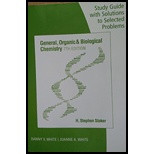
(a)
Interpretation:
The particle X has to be identified if fusion of hydrogen-3 and particle X gives helium-4 and a neutron.
Concept Introduction:
If the reaction occurs in the nucleus of an atom then it is known as nuclear reaction. These reactions are not considered as ordinary
This nuclear reaction can be represented by
Nuclear fission reaction is the one in which a large nucleus gets split up into two medium-sized nuclei with more free neutrons and a huge amount of energy. The word “fission” itself mean that it is splitting.
Nuclear fusion reactions are the one in which a large nucleus is formed from two small nucleus with release of huge amount of energy. For a nuclear fusion reaction to occur a very high temperature is required.
(b)
Interpretation:
The particle X has to be identified if two identical particle X fuses to give helium-4 and two protons.
Concept Introduction:
If the reaction occurs in the nucleus of an atom then it is known as nuclear reaction. These reactions are not considered as ordinary chemical reactions because the electrons do not take part in reaction while the particle inside the nucleus does. Isotope and nuclide are almost similar terms. Isotopes refer to the same element that has different mass number while nuclide refers to atoms of same or different elements with specific atomic number and mass number.
This nuclear reaction can be represented by nuclear equation. This is not a normal chemical equation. Nuclear equation considers the mass number and atomic number of the reactants and products. Unstable nucleus tends to emit radiation spontaneously. During this process the nuclide is transformed into nuclide of another element. Parent nuclide is the one which undergoes the radioactive decay. Daughter nuclide is the one that is formed from parent nuclide after radioactive decay.
Nuclear fission reaction is the one in which a large nucleus gets split up into two medium-sized nuclei with more free neutrons and a huge amount of energy. The word “fission” itself mean that it is splitting.
Nuclear fusion reactions are the one in which a large nucleus is formed from two small nucleus with release of huge amount of energy. For a nuclear fusion reaction to occur a very high temperature is required.
Want to see the full answer?
Check out a sample textbook solution
Chapter 11 Solutions
Study Guide with Selected Solutions for Stoker's General, Organic, and Biological Chemistry, 7th
- help 20arrow_forwardProvide the drawing of the unknown structure that corresponds with this data.arrow_forward20.44 The Diels-Alder reaction is not limited to making six-membered rings with only car- bon atoms. Predict the products of the following reactions that produce rings with atoms other than carbon in them. OCCH OCCH H (b) CH C(CH₂)s COOCH མ་ནས་བ (c) N=C H -0.X- (e) H C=N COOCHS + CH2=CHCH₂ →→arrow_forward
 General, Organic, and Biological ChemistryChemistryISBN:9781285853918Author:H. Stephen StokerPublisher:Cengage Learning
General, Organic, and Biological ChemistryChemistryISBN:9781285853918Author:H. Stephen StokerPublisher:Cengage Learning Chemistry: Principles and PracticeChemistryISBN:9780534420123Author:Daniel L. Reger, Scott R. Goode, David W. Ball, Edward MercerPublisher:Cengage Learning
Chemistry: Principles and PracticeChemistryISBN:9780534420123Author:Daniel L. Reger, Scott R. Goode, David W. Ball, Edward MercerPublisher:Cengage Learning Chemistry by OpenStax (2015-05-04)ChemistryISBN:9781938168390Author:Klaus Theopold, Richard H Langley, Paul Flowers, William R. Robinson, Mark BlaserPublisher:OpenStax
Chemistry by OpenStax (2015-05-04)ChemistryISBN:9781938168390Author:Klaus Theopold, Richard H Langley, Paul Flowers, William R. Robinson, Mark BlaserPublisher:OpenStax Chemistry & Chemical ReactivityChemistryISBN:9781337399074Author:John C. Kotz, Paul M. Treichel, John Townsend, David TreichelPublisher:Cengage Learning
Chemistry & Chemical ReactivityChemistryISBN:9781337399074Author:John C. Kotz, Paul M. Treichel, John Townsend, David TreichelPublisher:Cengage Learning Chemistry & Chemical ReactivityChemistryISBN:9781133949640Author:John C. Kotz, Paul M. Treichel, John Townsend, David TreichelPublisher:Cengage Learning
Chemistry & Chemical ReactivityChemistryISBN:9781133949640Author:John C. Kotz, Paul M. Treichel, John Townsend, David TreichelPublisher:Cengage Learning Living By Chemistry: First Edition TextbookChemistryISBN:9781559539418Author:Angelica StacyPublisher:MAC HIGHER
Living By Chemistry: First Edition TextbookChemistryISBN:9781559539418Author:Angelica StacyPublisher:MAC HIGHER





